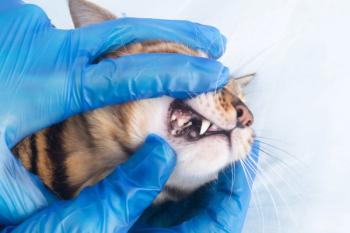
AAFP unveils feral cat guidelines
Albuquerque, N.M.-The American Association of Feline Practitioners (AAFP) published its strategy to dealing with the nation's 73 million feral or abandoned free-roaming cats, advocating trap-neuter-release (TNR) programs and, in some cases, euthanasia.
Albuquerque, N.M.-The American Association of Feline Practitioners (AAFP) published its strategy to dealing with the nation's 73 million feral or abandoned free-roaming cats, advocating trap-neuter-release (TNR) programs and, in some cases, euthanasia.
The three-page document, released at presstime, had yet to be circulated to ecologists and wildlife advocates critical of TNR practices that leave cats free to endanger birds, rodents, lizards and other small animals. Wildlife proponents and TNR backers routinely clash in emotionally charged debates on whether cat colonies should be destroyed to save wildlife or sterilized and freed. Yet despite the guidelines' promotion of humane measures when dealing with homeless cats, AAFP President Dr. Jim Richards says the guidelines give credence to wildlife concerns, leaving room for depopulation when necessary.
"We're certainly not looking for euthanasia for any cats, but not all situations involving feral cats present themselves in the same way," he says. "This issue is difficult because it asks, which species do you prefer? I don't know that everyone will be happy, but we've tried to take all views into consideration and provide the most balanced view possible. We don't want to give the impression that managing a cat colony is a final solution."
Jumping on board
That's not the final word from the veterinary profession, either. As AAFP unveils its document, the American Animal Hospital Association (AAHA) prepares to release a white paper next month on the feral cat issue. The American Veterinary Medical Association is scheduled to follow by revamping its welfare standards and position on abandoned and feral cats, created in 1996.
Heading up AAHA's task force is Dr. Merry Crimi, who says the association is closely considering AAFP's standards and wants to add to the dialogue.
"I think the guidelines provide excellent objectives to reducing the total number of feral and free-roaming cats," she says. "Managing cat colonies is not a hobby that goes on forever, but an attempt to limit the numbers. No one plan works for every community.
"I can't release any details on our project, but it won't be a pro/con position paper. It will describe the state of where we are on this. It's about information sharing, and I think that's important right now."
Public education
According to AAFP, animal shelters receive millions of unwanted cats each year and due to shortages of available homes, 75 percent of them are euthanized. It's these types of statistics that need to enter public debate, says Dr. Bill Folger, chairman of the AAFP's Committee on Feral Cat Issues and AVMA Animal Welfare Committee representative.
AAFP advocates public education campaigns designed to raise sterilization efforts and reduce domestic cat abandonment, which will require committed cooperation between state and local government agencies, wildlife groups, humane associations and the veterinary profession.
"This isn't exactly a polite conversation among professionals, let alone the public," Folger says. "It will always be extremely emotional because everyone has strident views. But it would be a fairy tale to expect we would find a home for all these cats. I think the only way to truly solve this problem is through education."
Inside the guidelines
While education plays a major part in the guidelines, the role of the veterinary professional to teach cat socialization techniques and guard against abandonment as well as ways to appropriately manage cat colonies also are addressed.
Managed cat colonies are designed to protect but reduce the number of unwanted cats through sterilization, vaccination, feeding and attrition. The guidelines suggest colonies should not be managed in areas posing a threat to wildlife.
"Every situation deserves its own prescription," Richards says. "I'm just very happy to see us broadening the conversation on this issue."
For a printable copy of the guidelines, visit www.aafponline.org.
Newsletter
From exam room tips to practice management insights, get trusted veterinary news delivered straight to your inbox—subscribe to dvm360.



